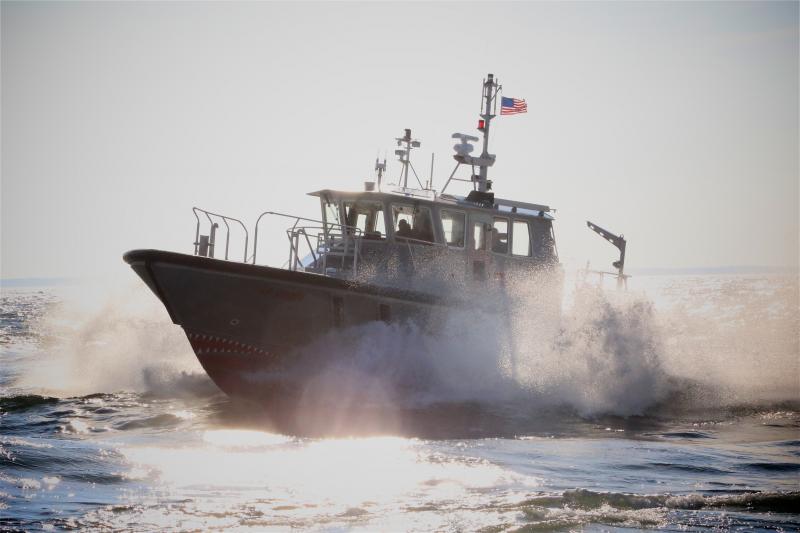Tankers to rail cars and back to tankers
Consider the vagaries of macro-global economics. Two years ago I was driving south on Route 1 above the canal when something new at the Delaware City refinery caught my eye. Whorls of new train tracks filled what used to be open fields between the highway and the stacks, pipes, metal buildings and flames of the complex. Half of them were occupied by black rail tank cars. An hour later, driving to the end of Savannah Road at Lewes Beach, I looked northward across Delaware Bay and counted not a single tanker lying in the Big Stone Anchorage. Lots of railroad tank cars at Delaware City? No tankers in the lower bay? A connection?
Of course. With loads of crude coming out of the Dakotas and Canada, it was cheaper for the refinery to build infrastructure to bring in its raw material by rail from the middle of North America than it was to pay for more expensive crude coming in by tankers from overseas. Good for the railroads, bad for the maritime shipping industry and the river pilots who guide ships up the Delaware Bay and River to the northern refineries.
But what a difference a few years make. All that extra supply dropped the price of crude oil to the point where it was far less profitable for companies to go to the extra expense of extracting crude oil from Midwest deposits of sand shale and shipping it east by rail. Production there slowed; rail shippers had less to carry and the Delaware River and Bay refineries looked once again to less expensive crude oil brought in by tankers. More tankers appeared at anchorage again in lower Delaware Bay, fewer tank cars on the rails at Delaware City. Happier shipping companies and happier pilots. Of course happier drivers too. All of that extra supply drove oil prices lower and we’re paying about a dollar and a half less per gallon for gas than we were two years back.
When I see pilots on the streets of Lewes, my initial greeting usually goes like this: “How are you doing? How’s traffic on the river?” Capt. Stuart Griffin, a member of the Pilots Association for the Bay and River Delaware, is one of the pilots I see from time to time. When the rail yards at Delaware City were full, the response didn’t bring much of a smile. But now that the bay shows plenty of tankers again, it’s another story.
“Getting busier,” was the most recent response. Last week Stuart sent me a fresh report on shipping traffic. It came from Dennis Rochford, who’s president of the Maritime Exchange for Delaware River and Bay.
“On top of last year’s increase in vessel arrivals over 2014 activity, we continue to see steady growth through the first six months of 2016,” Rochford said.
The report went on to note that the Maritime Exchange, which monitors shipping activity in Delaware River and Bay, recorded 1,234 ship arrivals at Delaware River port facilities in the first six months of this year compared to 1,127 arrivals for the same six-month period last year. That’s a 9.5 percent increase in vessel activity throughout the port. “We’re seeing increases in import cargos such as petroleum, containers, and fruit, as well as container, petroleum, and steel export gains,” Rochford said.
The report confirmed my earlier observations: It said a 17 percent growth in petroleum ship arrivals is driven by refineries receiving more crude oil by tanker from overseas and less product by rail from North Dakota and Canada. Changing market factors make it more cost effective to move crude by ship. Exports of natural gas from this country to others are also driving more shipping activity. The reports said the continued expansion of the Marcus Hook Industrial Complex is expected to further this growth. Natural gas liquids shipments, including propane and ethane, from the Marcellus Shale in Pennsylvania, continue to spur exports to markets throughout the United States and Europe.
“Clearly, shippers and carriers welcome the deepening of the Delaware River main ship channel from 40 to 45 feet. Knowing this project will be completed in late 2017 has created an industry buzz, and a heightened and positive perception among current and prospective port customers,” said Rochford.
There are currently 74 pilots on the roster for the Pilots Association for the Bay and River Delaware, many of them living in Delaware’s Cape Region. The association also provides a number of good jobs for launch operators and administrative folks at their Lewes headquarters next to the ferry terminal.
The added activity on the river will likely mean the pilots may be looking to add a few new members to their coveted ranks. It’s not a matter of signing up today and telling ship captains which way to point their vessels tomorrow. Griffin said it takes nine years for pilots to make their way from apprentice to a first-class pilot’s license. That makes it tricky business. Who knows how many times the fortunes of the railroad and maritime shippers will have shifted by then?

















































